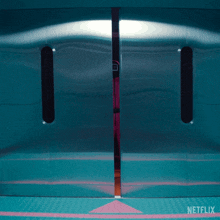On January 6, Richmond plunged into disarray. During the capital city's first snow day of the season, citizens enjoyed a relaxing day off until a power outage downtown disrupted the Richmond Water Plant. The outage jammed crucial water valves, and although the facility launched a secondary power system, it lasted only a few hours.
Photo Credit: Boots from Unsplash
Water flooded, further damaging the system and ultimately trashing the water pressure and levels in the Richmond, Henrico, and Chesterfield counties. By 10 am on Monday, city officials had issued a notice for residents to begin conserving water. And by mid-afternoon, a “boil water notice” shocked the city with news that the water was no longer safe for use.
Chaos ensued as restaurants and schools closed, sports games were labeled as inattendable, and water gallons flew off the shelves of supermarkets.

Photo Credit: Komori from Unsplash
In schools, meals were no longer made available, as well as bathrooms closing and water fountains being shut off. These necessities for a functioning building led to the closure of schools across both public and private districts.
Six long days passed before the water boil notice over the area was lifted. For nearly a week residents were stripped of their ability to shower, wash clothes, cook food, or drink their tap water due to bacteria contaminating the water.
Throughout this time, the leaders of the city made multiple promises of water being restored, yet, everytime it was followed with a quick notice of a delay. After multiple rounds of testing, the advisories were finally lifted on Saturday, January 11th.
My week surrounding the water crisis was hectic. On Monday, I was overjoyed with the snow day, until, mid-morning I received a frantic call from my mother instructing me to run to the nearest store and pick up as much water as possible. I was faced with chaos when I entered the store as Richmonders flooded the aisles and stripped the markets of leftover water.
I managed to get a few bottles and returned home to another snow day on Tuesday.
By Wednesday, most schools were closed; however, my school was not. I walked into school with the bathrooms, water fountains, and cafeteria closed.
This continued for the rest of the week as I was forced to shower at my nearby friends' houses and make meals using a minimal amount of dishes.
In conclusion, the water crisis of last week showed Richmonders that their city lacked a common feature found in nearly all cities in the United States- a 48-hour backup power system. The lack of this resource was the ultimate root problem. If the city was able to support the plant for two days using a backup power source, then the plant would’ve been able to immediately recover.
















.jpg)
